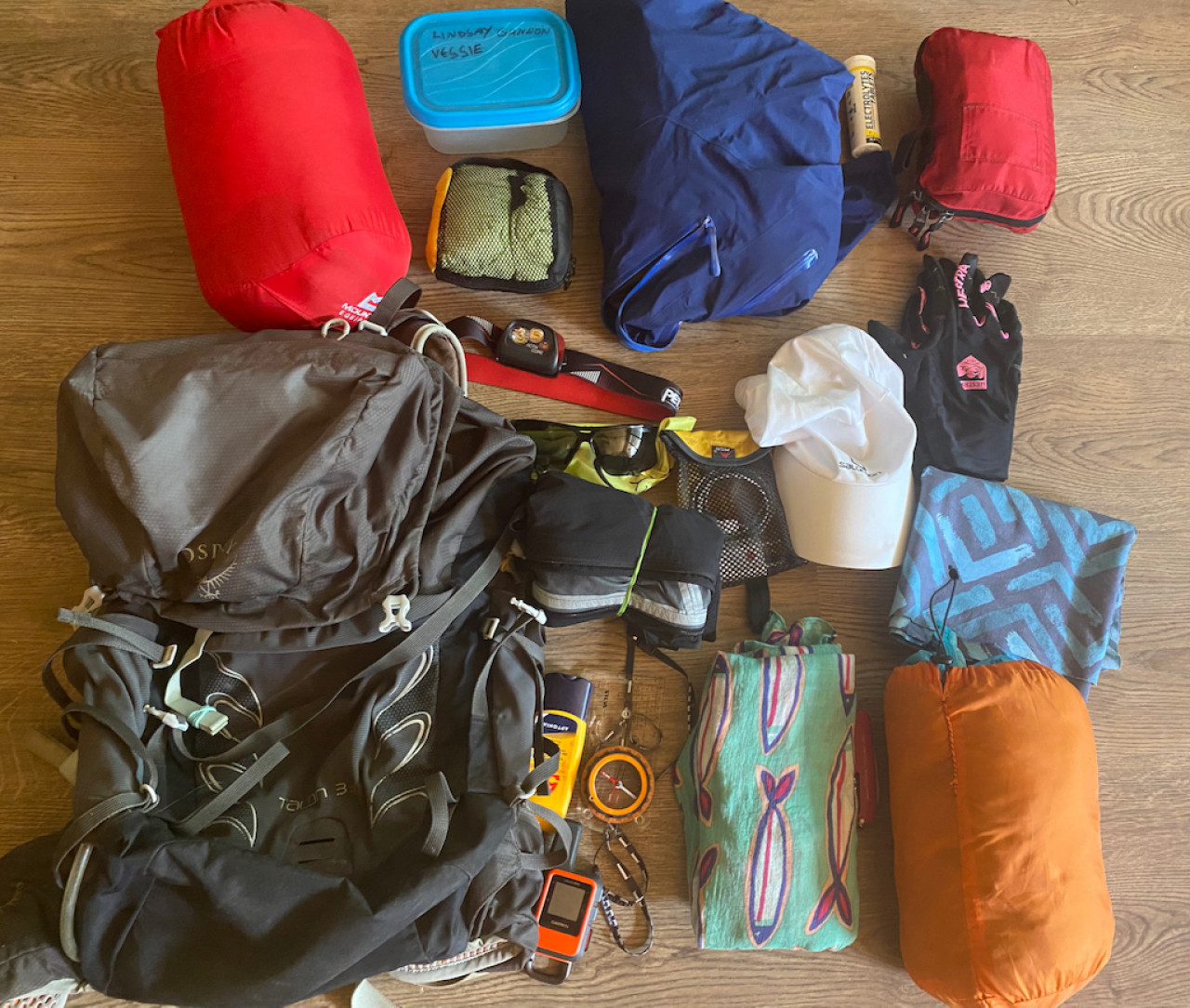 Kit for the GR20 Corsica
Kit for the GR20 Corsica
This is the 'full monty' on our Corsica GR20 Kit list. We put a great deal of thought into our kit lists, but we are asked on many occasions about the finer detail, and on the trip we are often quizzed about what we are wearing, carrying and using. After 20 years as an International Mountain Leader I have my own views on what I need to be comfortable and efficient on a route such as the GR20 - Europe's hardest trek.
I have taken our standard kit list for the GR20 in Corsica and embellished it with my own tips and tricks!
Equipment
I always hike in walking shoes, not 'trainers', not 'tennis shoes' as our American cousins call them, but proper 'walking shoes' made and designed for that purpose. About 15 years ago my knees developed problems due to wearing boots, and I have hiked in walking shoes ever since. I have strong ankles and it works for me, but not for everyone. If your ankles are encased in tightly drawn boots then they cannot make the lateral movement that an ankle naturally makes, and the knees have to do the movement, hence my own knee problems developing. My current favourites are the Altra Olympus 4. Like most Altra models they have a wide 'toe box' which allows our toes to work as nature intended, rather than being cramped into a tight fitting sock, and boot.
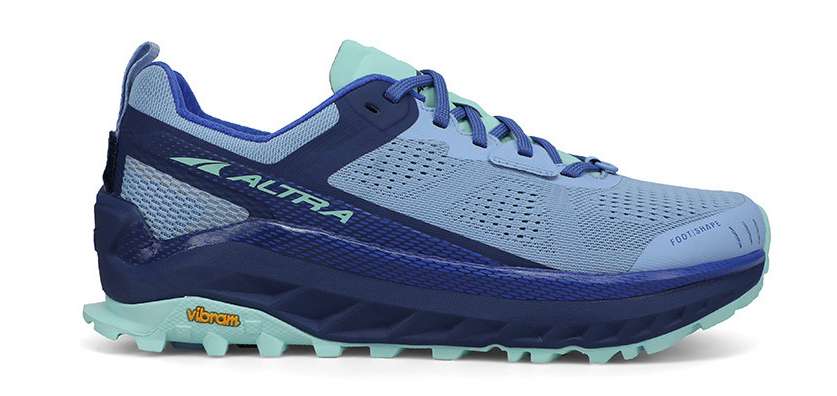
Altra Olympus 4
If you decide to treat yourself to new footbeds then do try them first at home. New footbeds may be thicker/thinner than what you already have in your boots and lead to blisters. You might have thought they were a treat for your trip, but soon regret buying them when the blisters being.
Poles, in my view, are indispensable, as they take as much as 30% of the load of your knees on descents, and are a great upper body workout on the ascents. I always use a pole with built in shock absorber, and choose one with a comfortable cork handle such as the Leki Cressida.
Take the advice above and test your sack. So many times our guests turn up with a rucksack either too big or too small! I favour the Osprey Talon 33 and find it the prefect hiking sack. I totally refuse to use a rucksack that feels heavy BEFORE I've put anything in it. The Talon has everything I want, a good waist belt, this is crucial as the weight of a rucksack should rest on your hips. A good chest strap that incorporates an emergency whistle. Mesh pockets on the sides for quick access to maps, compass, phone etc. A pocket on the back, again mesh, so it stretches to fit various items, and a slot for my hydration system. You should have a rucksack that fits all your gear plus you can add an item of group equipment, such as a small emergency shelter.
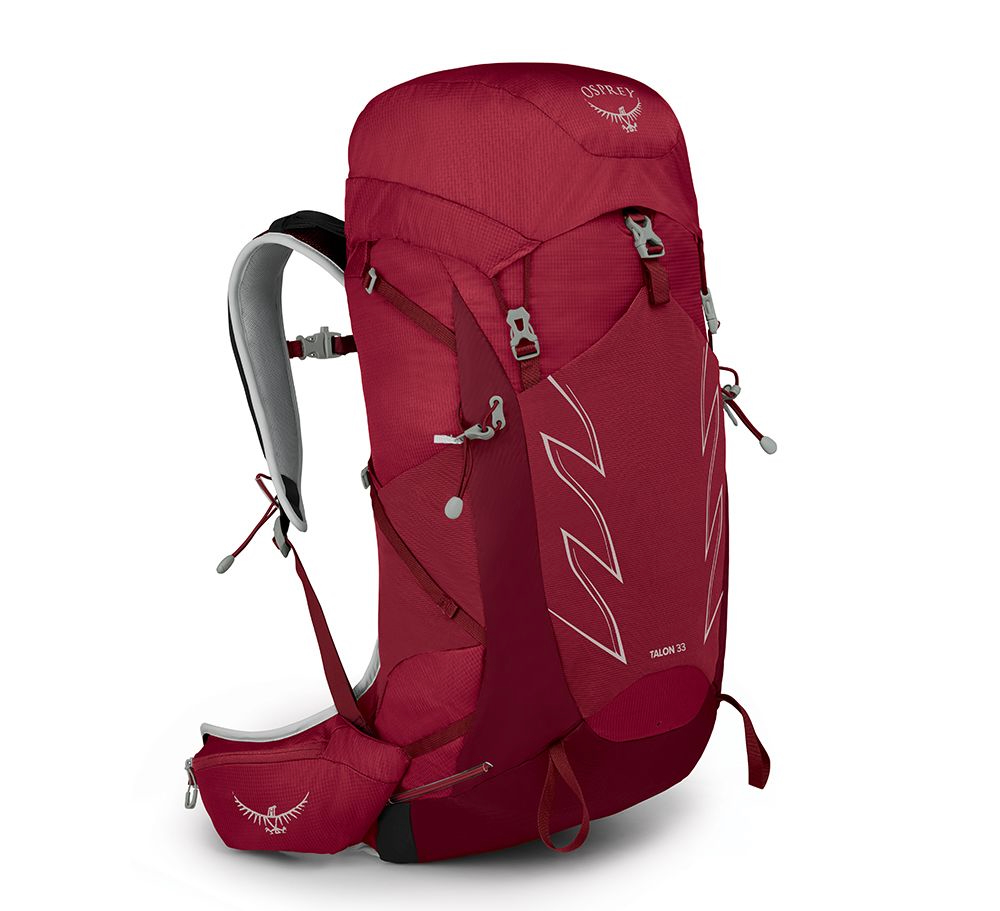
Osprey Talon 33
On the nights you are at the Refuge de Sega, and the Bergeries de Vallone you also need to fit a sleeping bag, pillow, pack towel, wash kit and a few extra items of clothing into your sack. Interestingly, I note that the Talon 33 is now described as a men's rucksack, and the female various is a Tempest. The difference between male and female rucksacks is the length of the back, but if you can adjust it to fit you then it doesn't really matter.
I always have a ruck sack liner to be sure that emergency kit such as my down jacket will always be dry, I do not like 'covers' as they often don't fit well, will fill up with rain water at the bottom, and prevent me getting quickly into my kit if I need to access it.
It's fine to take water bottles, but you will not take in as much water as those with hydration systems who are sucking away happily while they walk. Yes, I know the argument that you can run out because you don't know how much you've drank, but I never have and you will get a 'feel' for how much is left. Also water bottles attached to the outside or your sack are subject to the sun's rays, and there are some views, such as this National Geographic article, that suggest the plastic interacts with the water in intense sunlight and is not healthy. There are also various filters on the market which means you can fill up at the many mountain streams en route. One we see used a lot is the Katadyn Be Free - definitely worth investigating for a trip such as the GR20 where you need to carry a lot of water.
Do not bring something big enough to feed a family of four, it will take up too much room, and your lunch will ricochet off the empty spaces until it resembles a mushy soup! Also bring a waterproof bag/sack to put your lunch in to avoid tuna fish leakage over your new down jacket, etc.
Carry a mobile phone charge pack for the nights in the huts where access to electricity is not possible. These do not have to be bulky or heavy, a slim line fast charging one will do. Many of us use our phones as our cameras and a flat phone is annoying when you planned to take pictures. Many of the refuges/huts are relying on solar power or a generator, and will not necessarily allow you to plug into a socket as it drains their supply.
Clothing
At all times we carry our waterproof jackets, the mountain are unpredictable. It's hard to imagine when setting out in blistering sunshine that you might experience a torrential downpour later in the day, but it does happen. Try and have a decent waterproof jacket that will stay 'waterproof'. Underarm zips are good for some air.
Having a full length zip is the best option. Having to take your boots off during the start of a downpour to be able to pull your trousers on is not a lot of fun.
I hike in a skort. In my view they are comfortable, cool, and are usually made of fabrics that can be washed and dried again very quickly. Also being a woman of a 'certain age' I like a skirt rather than shorts as I find them more flattering. My favourite right now is the Karpos Lavaredo skirt, though almost all main brands now make a short/skirt for women.
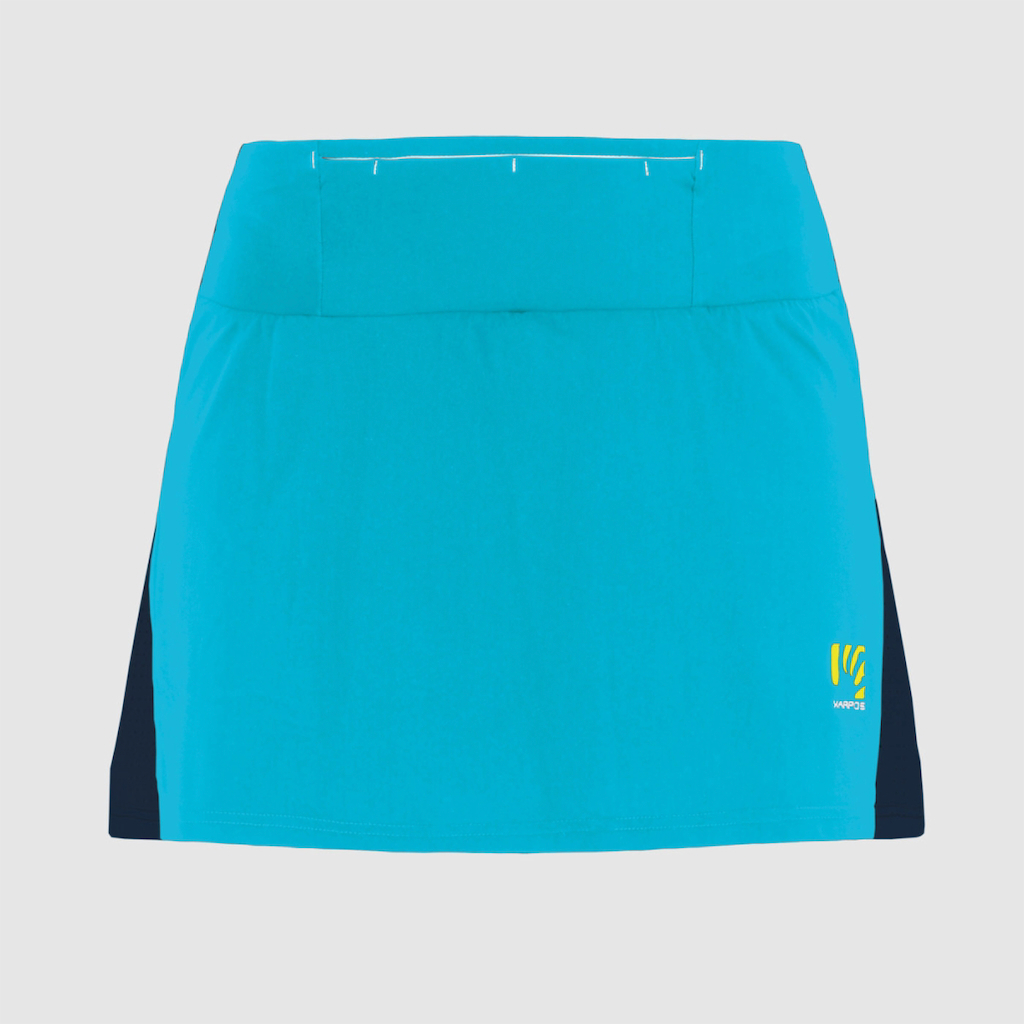
Karpos Lavaredo running/hiking skirt
Boys, if you want to wear one it's up to you! I'm Scottish so it's normal for the lads to wear a kilt (skirt). Otherwise I suggest a light weight pair of shorts that will wash and dry quickly.
I really don't like wearing hats as I get too hot, however, in Corsica they are essential. Get a very lightweight one, with a large 'bill', or 'peak' that protects your eyes from the glare. Also get a light colour, such as white, which will be cooler. Who cares if it looks grubby after a few days, the important thing is that it works.
We are often asked why do I need gloves in Corsica, where the chances are it will be hot. Gloves are not just to protect against the cold, they are also protection against the rocks. We often use our hands as we scramble over rocks, and a thin pair of gloves can offer protection, especially on steep descents on loose ground where you might find you slip and sit down. If your hands are protected your fall will often have less consequences as you will instinctively put your gloved hands out to catch your fall. No gloves, and often we will have a harder fall with scraped and grazed fingers, and palms.
You really do not need to bring a t-shirt/base layer for every day. I take 3 for 2 weeks of hiking on this route, and just rinse them out at the end of the day. Invest in fast drying functional layers. I hike in a sleeveless Montura t-shirt that has a high neck so I do not burn my chest.
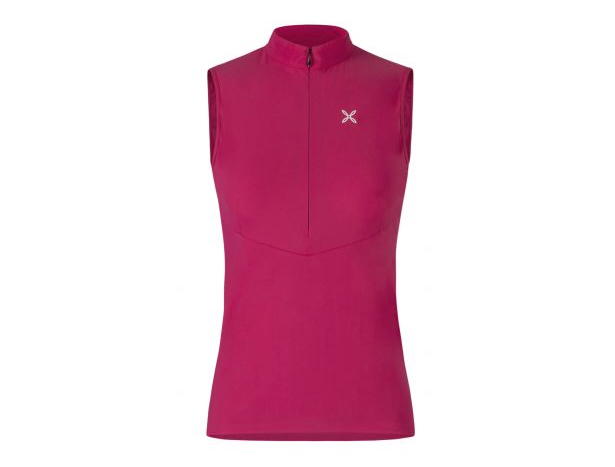
Montura t-shirt
I have converted to Injinji toe-socks. The reason is that having developed bunion issues my physio suggested toe socks. Our feet are not designed to be cramped/squished into a tight fitting sock, and the individual toes really help your toes to spread out and your feet to work as nature intended. I have also found that they reduce the chance of blisters between the toes. Others on the trail have reported the same!
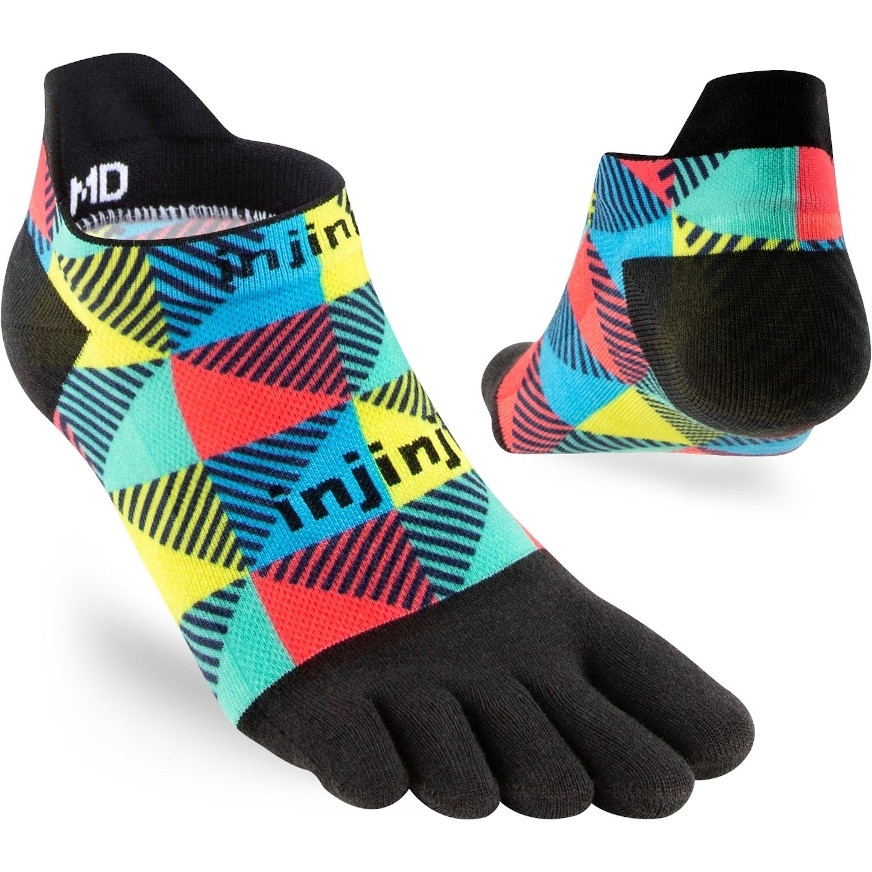
INJINJI Socks
They can be fiddly to get onto your toes, but once you get used to pulling them onto all of your digits you might like them? I certainly notice a difference if I hike in toe socks compared to tight fitting sports/hiking socks and I am willing to put up with the 'fiddle' to have more comfortable hiking experience.
So many ask why do I need a down jacket in Corsica. Same answer as the 'waterproof' jacket question, because it is the mountains and you might need it. I have in fact hiked in Corsica wearing my down jacket in July. Also at the overnight camping spots (2 nights) it can be cold at night, and I have been known to sleep wearing it.
Dormitory nights in Refuges/Gîte
The Forclaz pillow from Decathlon is brilliant, it inflates in only 3 breathes, is cheap, and packs away quickly. It has a reverse value which stops air coming out while you are inflating it. It has changed my camping experience!
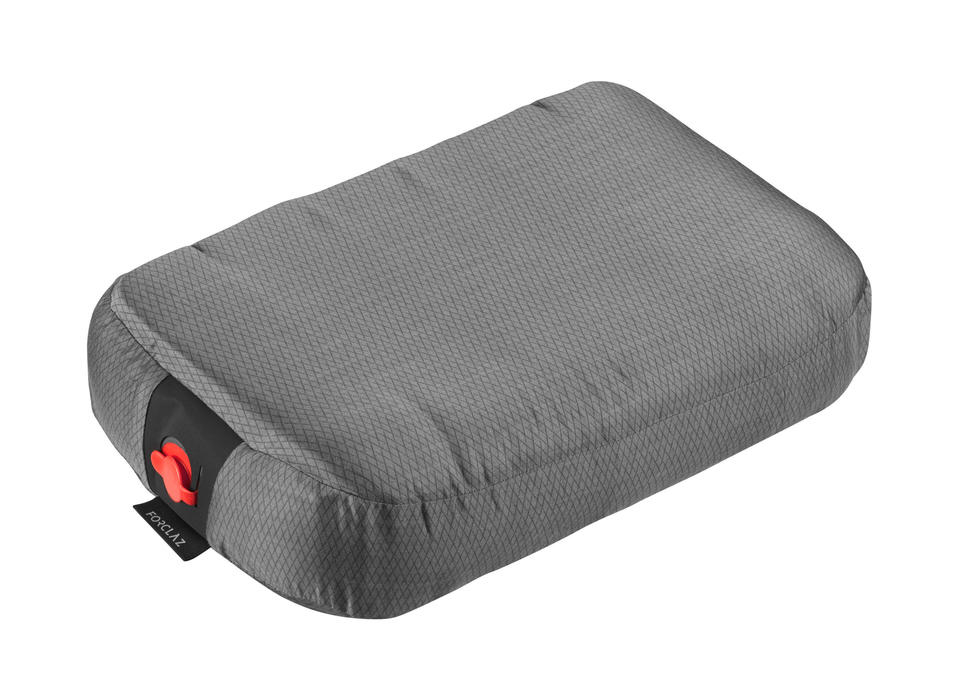
Forclaz Pillow
Comfort
You should not be carrying a huge bottle of sunscreen each day. Buy a large bottle, but keep it in your luggage, and bring a small bottle that can be topped and ideally fits into a pocket on your waist belt so you have easy access.
Sore chapped sunburned lips are not a pleasant experience and you should use a high protection factor lip balm. Again keep in your waist pocket on your rucksack for easy access.
Even if you insist you never wear sunglasses, we are most likely to insist that you have a pair on this trek. The glare, all day long, can be strong, and can really give you a headache. Get a good pair with a high protection factor, rather than the cheapest ones possible which can still give you sore eyes.
No you do not need to carry swimwear! As far as I am concerned you can swim in your underwear, in swimwear, your hiking clothes or stark naked! If it is warm enough to swim, and we stop often to swim, then your clothes will dry quickly. Personally I swim in my underwear, preferring not to carry another item, and it is usually dry before we start hiking again.
You will also want lightweight shoes for the nights we camp and you have no access to your luggage. I always take a pair of Crocs, they are light, stuff easily into my rucksack, and can be washed if they get mucky.
Indispensable! Take a bandana or similar to soak in the pools, you can then wipe down your face, neck etc and the relief is immense. Or you can wrap it around your head and this really will cool you down. I also take a 'sarong' and soak it and often put it around my shoulders.
I simply take a large bottle of shampoo (cheap stuff) in my luggage, and it gets used for washing my hair, my clothes and my lunchbox. Why take 3 items when 1 will do the job.
Personal First Aid
On hot days you may need electrolyte salts or dioralyte. I hardly ever use these, but there are days in Corsica where I feel that water just doesn't do it! Having something that replenishes the salts that are being sweated out of your body is crucial.
Well, we could talk for hours about this one. My own opinion is that as soon as you get a 'hot spot', in other words you feel a nip in a particular part of your foot, you stop immediately and apply Strappal tape.
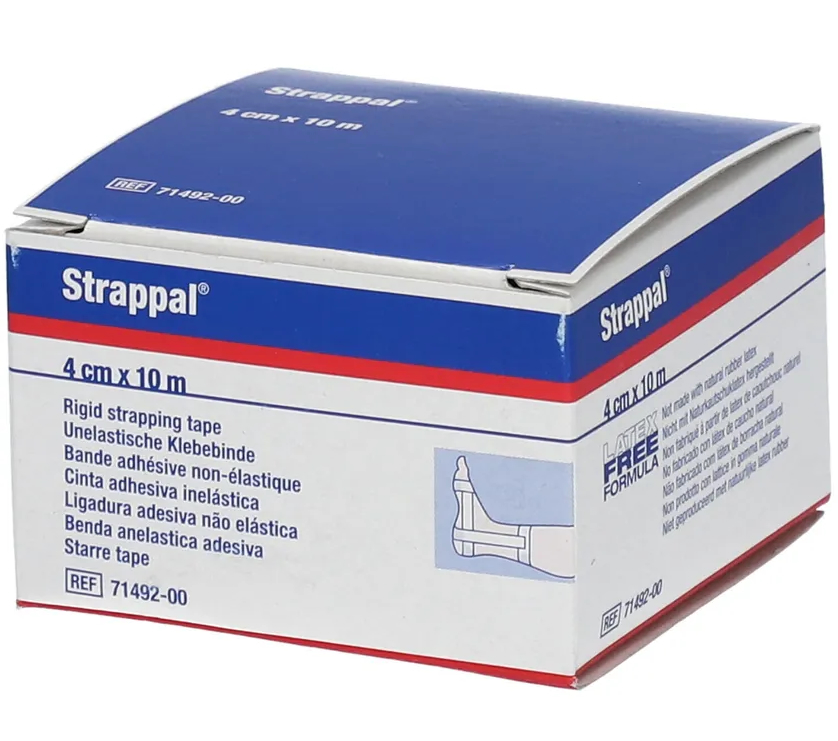
Strappal tape
This is a zinc oxide tape, but the brand Strappal seems much better equipped to stop problems than other similar types of tape. I find that if I apply the tape immediately, and leave it for days if necessary, that it works wonders. I do not like Compeed and find that it causes more problems than it solves. Compeed sticks to socks and when socks are removed the skin is removed as well, and blisters end up much worse than they should be. That is my personal opinion, and I am sure you all have your own methods. I can almost guarantee that when my guests see me applying Strappal they rapidly convert, and my own tape is used up on group issues. Next time bring your own!
Documentation
Optional items
Luggage - a bag with wheels is definitely the best option. Be aware that not all the accommodation has a 'lift' and you may have to carry your bag up several flights of stairs. On several nights you will have to carry/drag your luggage across a campsite, (not far, maybe a 100 metres) and on one occasion even up a very small hill. Those without wheels always find it harder, than those with wheels. You should also bring a large bin-bag or similar that can cover your luggage if it rains, this is because on several days the luggage is stacked outside your accommodation and if it rains it will be wet when you arrive.
A final word - a linen shift dress is a great thing to take on this trip. You will find many shops in Calvi, Corte, and Porto Vecchio which sell them. Linen is fabulous for the hot evenings and a dress is an easier option than having to co-ordinate t-shirts and shorts/trousers etc. It's great to feel clean and refreshed at the end of a day and be able to wear something other than hiking clothes. Many outdoor companies make hiking dresses which fold up very small, are lightweight, dry quickly when washed, and can easily fit into your rucksack for the nights when you have no access to luggage. Boys - well, what can I suggest for you, a linen shirt and lightweight shorts for evening wear? Same principle - fabric that feels cool even in hot climates and takes up very little luggage space! Happy shopping everyone.
Keep up to date with Tracks and Trails through our newsletter, click here to sign up. For more information about our hiking trips, either bespoke or Scheduled Departures, speak to one of our expert team by calling +44 (0) 20 8144 64442 or email This email address is being protected from spambots. You need JavaScript enabled to view it. In addition to hiking we offer trail running, and in winter snowshoeing and cross-country skiing.
